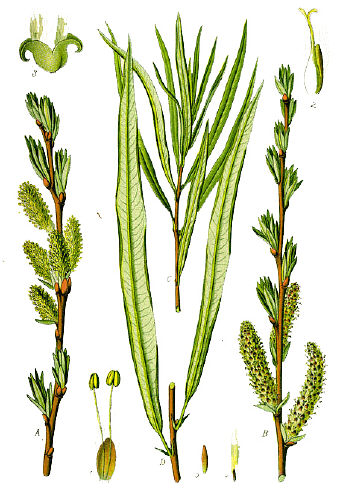 |
Willow (Salix alba).
Willow
and the word witch came from the
same old English word Wingle. The ancient order of Celtic
priests
the Druids used to sacrifice people in wicker (the Scandinavian
word for willow) at full moon. Other cultures see willow
at a more
positive light. The ancient Egyptian regarded it a symbol
of joy
and the Chinese associates it with feminine beauty. The
wood of
willow is used to make cricket bats. The first recorded
medicinal
use of willow was by an English clergyman Reverend Edward
Stone in Chipping Norton, Oxfordshire in 1796. He tasted
its bark
and found it to be extraordinarily bitter but at the
same time
discovered that it has antipyretic and analgesic values.
The active
principle Salicin was isolated in 1827. The synthetic
form was
produced by a German chemist Dr. Felix Hoffmann in 1897
for the
Bayer company and named aspirin. It blocks the enzymatic
conversion of the fatty acid arachidonic acid to prostaglandins.
It
inhibits the aggregation of platelets and prolongs the
bleeding time.
It is recommended in patients with amaurosis fugax and
its related
compounds are useful in the treatment of ocular inflammation
such
as episcleritis and scleritis. |
| m |
 ... ... ... ... |
0 |